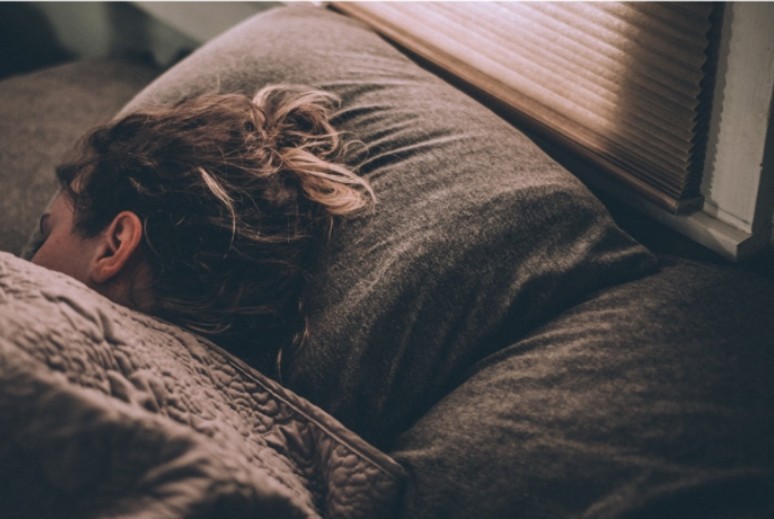Creating the perfect sleep environment is essential for achieving quality rest and maintaining overall health. Your bedroom should be a sanctuary where you can unwind, relax, and prepare for a restful night’s sleep. This guide provides practical tips to transform your sleep space into a haven of tranquility. From optimizing your bed and lighting to controlling noise and temperature, these suggestions will help you design a sleep-friendly environment. By making a few adjustments, you can significantly improve your sleep quality and wake up feeling refreshed and energized. Let’s explore ten effective ways to create the perfect sleep environment.
1. Choose the Right Mattress
The foundation of a good night’s sleep starts with a comfortable mattress. Investing in a high-quality mattress tailored to your sleep preferences can make a significant difference in your sleep quality. Consider your sleeping position, body type, and any specific health concerns when selecting a mattress. Test different types and firmness levels to find the one that offers the best support and comfort. Remember, a mattress isn’t a one-size-fits-all purchase. What works for someone else might not work for you. Don’t hesitate to spend time researching and trying out options to ensure you make the best choice for your sleep needs.
2. Optimize Your Bedding
Quality bedding can enhance your sleep experience by providing comfort and regulating body temperature. Invest in breathable sheets, such as those made from cotton or bamboo, which can help keep you cool throughout the night. Layering your bedding with a lightweight blanket and a heavier duvet allows you to adjust your warmth as needed. Additionally, choosing the right pillow is crucial for proper neck and spine alignment. Consider pillows made from memory foam or latex for optimal support. For those looking to upgrade their entire sleep setup, a SleePare mattress is an excellent option for enhanced comfort and support. Paying attention to these details can create a cozy and inviting sleep environment.
3. Control Room Temperature
Temperature plays a critical role in sleep quality. A room that is too hot or too cold can disrupt your sleep, making it difficult to stay asleep through the night. Aim to keep your bedroom at a cool, comfortable temperature, ideally between 60 to 67 degrees Fahrenheit. Use a fan or air conditioner to cool the room in warmer months and a heater or extra blankets in colder months. Additionally, consider using a programmable thermostat to automatically adjust the temperature during the night. Finding the perfect balance will help you stay comfortable and promote deeper, more restful sleep.
4. Reduce Noise Levels
A quiet environment is essential for uninterrupted sleep. Minimize noise disruptions by using earplugs or a white noise machine to drown out background sounds. If external noise is a significant issue, consider soundproofing your bedroom with heavy curtains, carpets, or acoustic panels. You can also create a more peaceful atmosphere by reducing noise within your home. Encourage family members to keep the volume down during your sleep hours and avoid activities that generate noise. By taking these steps, you can create a serene and quiet space conducive to relaxation and restful sleep.
5. Manage Lighting
Light exposure significantly impacts your sleep-wake cycle. Too much light can make it challenging to fall asleep, while a completely dark room helps signal your body that it’s time to rest. Use blackout curtains to block out streetlights and early morning sun. Dim the lights in your home an hour before bedtime to help your body transition to sleep. Additionally, avoid using electronic devices with bright screens close to bedtime, as they can interfere with melatonin production. If you need some light, opt for a low-wattage, warm-colored nightlight. Creating a dark, calming environment can improve your sleep quality and help you fall asleep faster.
6. Declutter Your Bedroom
A cluttered room can create stress and make it difficult to relax. Keep your bedroom tidy and organized to promote a sense of calm and tranquility. Remove unnecessary items and furniture that don’t contribute to your sleep environment. Use storage solutions like under-bed bins, shelves, and closets to keep belongings out of sight. Make your bed every morning to set the tone for a tidy room. A clean and uncluttered space can significantly reduce stress levels and make it easier to wind down at the end of the day, contributing to a better night’s sleep.
7. Use Relaxing Scents
Incorporating calming scents into your bedroom can enhance your sleep environment. Essential oils like lavender, chamomile, and eucalyptus have soothing properties that can help you relax and prepare for sleep. Use a diffuser to disperse these scents throughout your room, or place a few drops on your pillow or bedding. You can also use scented candles or linen sprays for a similar effect. Be mindful to choose scents that you find personally relaxing and enjoyable. The right aroma can create a peaceful atmosphere, signaling to your brain that it’s time to unwind and sleep.
8. Incorporate Calming Colors
The colors in your bedroom can influence your mood and ability to relax. Opt for soft, neutral tones like blues, greens, and pastels, which are known to have calming effects. Avoid bold, bright colors that can be stimulating and make it harder to fall asleep. Consider repainting your walls or adding new decor in these soothing hues. You can also use accent pieces like pillows, throws, and artwork to incorporate calming colors into your space. Creating a visually peaceful environment can help reduce stress and anxiety, making it easier to achieve restful sleep.
9. Establish a Bedtime Routine
A consistent bedtime routine signals to your body that it’s time to wind down and prepare for sleep. Develop a series of relaxing activities that you perform every night before bed. This could include reading a book, taking a warm bath, or practicing meditation or deep breathing exercises. Avoid stimulating activities like watching TV or using electronic devices, which can interfere with your ability to fall asleep. Consistency is key, so try to go to bed and wake up at the same time every day, even on weekends. Establishing a routine can help regulate your sleep-wake cycle and improve overall sleep quality.
10. Limit Caffeine and Alcohol Intake
What you consume during the day can significantly impact your sleep. Limit your intake of caffeine and alcohol, especially in the hours leading up to bedtime. Caffeine is a stimulant that can keep you awake and alert, while alcohol can disrupt your sleep cycle and prevent deep, restorative sleep. Instead, opt for caffeine-free herbal teas or warm milk in the evening. Paying attention to your diet and drink choices can help ensure that your body is ready for sleep when it’s time to go to bed. Making mindful decisions about what you consume can improve your sleep quality and overall health.
Conclusion
Creating the perfect sleep environment involves a combination of comfort, tranquility, and consistency. By choosing the right mattress and bedding, controlling room temperature and lighting, and incorporating relaxing scents and colors, you can transform your bedroom into a sleep haven. Reducing noise, decluttering, and establishing a bedtime routine further enhance your ability to relax and achieve restful sleep. Paying attention to your diet and making mindful choices about caffeine and alcohol intake also contribute to better sleep quality. Implement these tips to create a serene and inviting sleep environment that helps you wake up refreshed and rejuvenated every morning.



